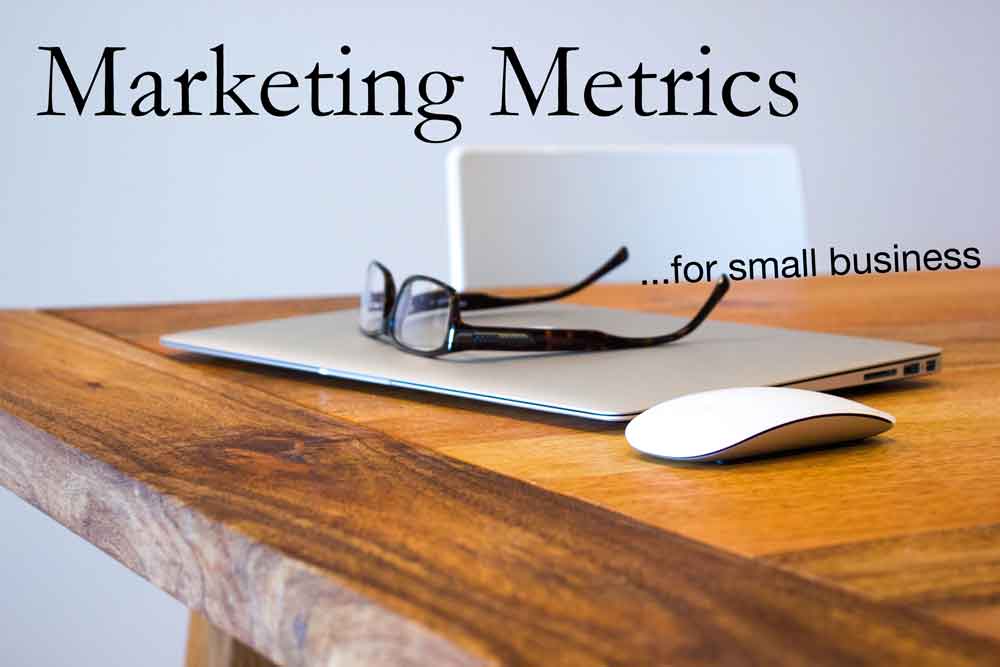Marketing Metrics For Small Business
“What gets measured, gets managed.” –Peter Drucker
“Half the money I spend on advertising is wasted, the trouble is I don’t know which half.” –John Wanamaker
Marketing metrics. Few things strike as much fear into the marketing department, or cause as much confusion among small business owners, as that of marketing metrics.
Data collection, analytics, statistics, and more formulas than you could ever hope to use. There’s a formula for almost everything! (I have a book at home dedicated solely to marketing metrics that’s over 400 pages long. 400 pages of formulas?! And that’s just a single book among the dozens of other marketing books each with dedicated chapters to metrics, yeesh.)
It’s no wonder that most business owners don’t bother to look into their marketing metrics. How in the world are you supposed to collect, track, and analyze 400 pages of formulas all while running a successful business?
Well I’m here today to tell you that you don’t have to, nor should you, to get results from your marketing.
Thanks to the advances in technology we’re literally drowning in data. We have far more information available than we could ever hope to read, much less analyze and understand.
Our goal though isn’t to become data analysis technicians, but to operate a value providing, revenue generating, customer pleasing business. So let’s focus on that.
Before we dive in there are two ways you can go wrong in your approach to marketing metrics.
First, by not looking at metrics at all, and second, by becoming fixated (obsessed) with metrics at the expense of all else. Neither is helpful to your business or your customers.
Let’s begin.
Step 1) Planning and goals
The first step to getting anywhere is deciding where you want to go, so look over your existing marketing plan (or if you don’t have one, now’s a good time to get one) and pick a few key goals that relate to an area of your business you’d like to improve, such as:
- Customer acquisition
- Brand awareness
- Market share
- Margins and profits
- Customer profitability
- Promotion efforts
- Advertising efforts
- Online and Social Media
Step 2) Start slow, but start now.
Pick a few (as in 2, maybe 3) key metrics that are relevant to your business. These are called key performance indicators (KPI) because they literally identify key areas of performance that matter to your goals.
Some good examples of KPI’s are:
- Return on investment (ROI) (Try to increase)

- Customer acquisition costs (Try to reduce)

- Net Promoter score (one of my favorites! Try to increase)
![]()
Promoters are those that would rate 8 out of 10 or higher if asked “would you recommend my company to a friend?” and detractors are those that would rate 0-6. No points for 7 in the middle.
- Audience Engagement – a social media metric (try to increase)

- Customer Lifetime Value (try to increase)
(There are a lot of different ways to calculate this one, but a nice easy way is as follows)
Add all customer revenues (of every single customer you have) for an entire year then divide by your total number of customer which gives you average revenue per customer.

Then, multiply this number by the average lifetime of a customer which will give you a rough lifetime value of your customers.

Step 3) Learn to assign values to qualitative measures
A qualitative measure is something you can’t easily measure. A sale is easy to measure because there is an exact amount of money exchanged. How much a new visitor to your website is worth on the other hand, or the value of another “like” on Facebook, or another 20 followers on Twitter, is a trickier subject.
These are challenging questions to answer for sure, but worth it even if you can only roughly assign values to them. The reason it’s worth trying to assign values to these, is that it allows you to focus on what’s giving you the greatest return as you keep moving forward in your marketing efforts, knowing where to invest more time, and more money to get the greatest return on investment (ROI).
Here’s an example:
If for every 10 new people that “like” your Facebook page, 1 becomes a customer, and the lifetime value of a customer is say $5,000, then 10 Facebook “likes” is worth $5,000.
You can apply the same reasoning to Twitter, your website, radio campaigns, almost any advertising method that doesn’t have a clear and obvious direct number associated to it.
Step 4) Use pay per click
The beauty of pay per click (PPC) advertising is it’s a much easier analytic to track. If you’re looking to get into marketing metrics, this is a nice and simple way to start.
Here’s how it works.
You create an ad, link it to a sales or contact page on your website, then measure how much the ad cost, and how much you sold or how many contacts you received.
A direct ROI, which allows you to tweak and modify your approach over time.
There’s a number of PPC services available through Google, Facebook, Twitter, and a few others.
Conclusion
In a perfect world, a small business would be able to collect, track, and measure everything that the big companies do; but just because you don’t have a multimillion dollar marketing budget and a team of 1000 people doesn’t mean you should ignore it completely.
Set a few goals, start slow, measure a few qualitative metrics, and maybe try a PPC campaign and you’ll be well on your way to mastering marketing metrics (without becoming a slave to the numbers).



